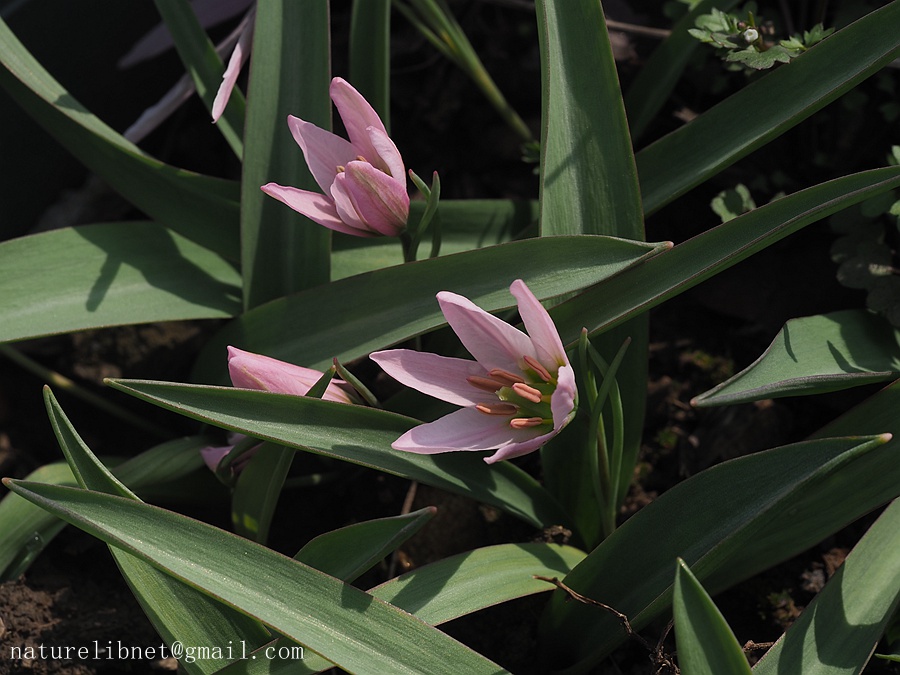- Scientific Name: Amana hejiaqingii M.Z. Wang & P. Li
- Ref:Taxonomy (MDPI) 2022, 2(3), 279–290
- Chinese Common Name:大别老鸦瓣
- Family: Liliaceae
- Genus: Amana
- Type: CHINA. Henan Province: Xinyang City, Shangcheng County, Fushan Town, Liluocheng (里罗城), in deciduous broadleaf forest, 487 m, 15 February 2022, Pan Li et al. WMZ1722 (holotype HZU, isotype HZU, PE, KUN, CSH, HIB, WH, ZM)
- Etymology: The specific epithet is named in memory of Professor Jia-qing He(何家庆), a Chinese botanist who was dedicated to plant investigation in the Dabie Mountains. He walked about 12,684 km and collected nearly 10,000 specimens during a 255-day fieldtrip in the Dabie Mountains, becoming the first person ever to make a comprehensive wild plant investigation of the Dabie Mountains.
Perennial herbs. Bulb ovoid, 0.9–2.3 cm in diameter, tunics yellowish-brown, thinly papery, glabrous, sometimes sparely villous inside. Stem 1.1–12.3 cm tall, glabrous, simple. Leaves usually two, opposite, green, adaxially middle grayish white, oblanceolate, glabrous; the lower leaf 8–26.6 × 1.0–2.8 cm, the upper 7.7–26 × 0.5–1.4 cm, and leaves can reach 34 cm long at fruiting stage. Bracts usually three, verticillate, linear, green, 1.2–4.2 × 0.1–0.3 cm, and bracts can be flat and slightly curved at fruiting stage. Scape 5.1–14.2 cm tall, glabrous, simple. Pedicel 0.5–4.1 cm. Flower solitary, funnel-shaped; tepals six, pink, with a yellowish-green blotch at the very base inside and green-yellowish or purple-red streaks on the back; outer tepals lanceolate, acute, 2.4–4.4 × 0.6–1.1 cm, inner tepals narrow elliptic, acute, 2.1–3.9 × 0.6–1.0 cm. Stamens six, two-wheeled, the inner three slightly longer than the outer; filaments yellowish-green, 3–13 mm long, proximally dilated, gradually attenuate towards apex, glabrous. Anthers yellow, 5–15 mm long. Ovaries oval, yellowish-green, constricted below the style, 0.3–0.7 cm long. Style 0.4–0.6 cm long. Fruit capsule subglobose, triquetrous, 0.7–1.4 cm in diameter, apex long beaked, 0.5–1.2 cm long. Fl. January–March, Fr. March–May.
